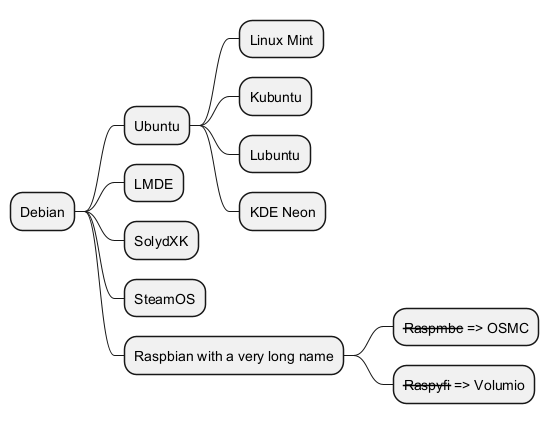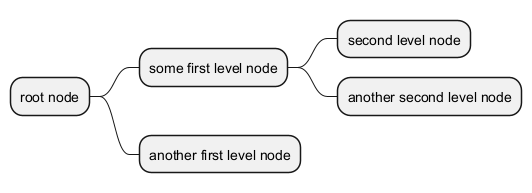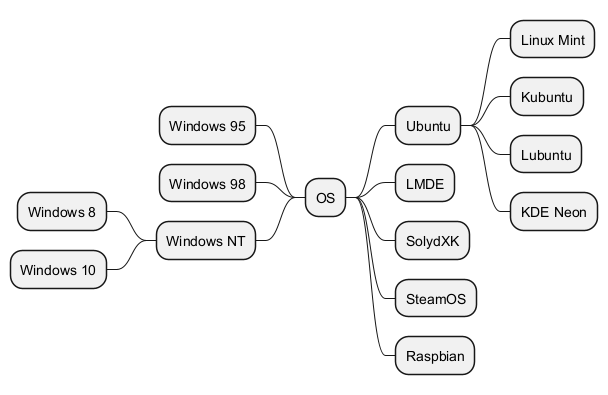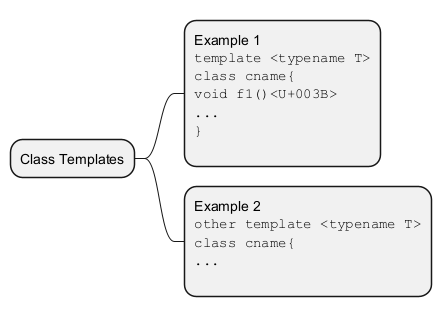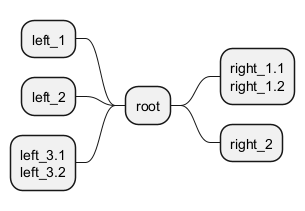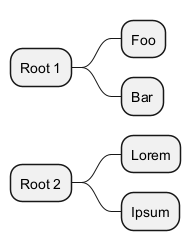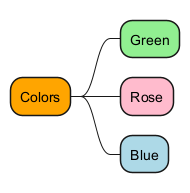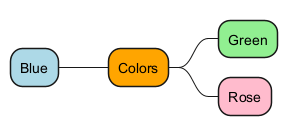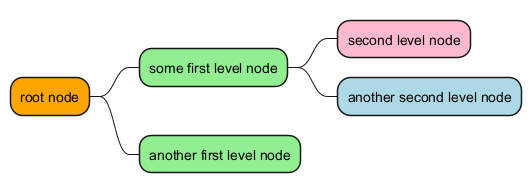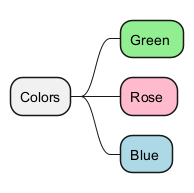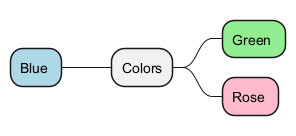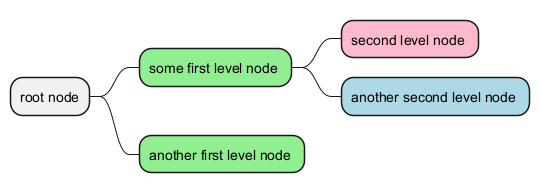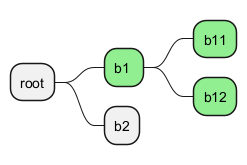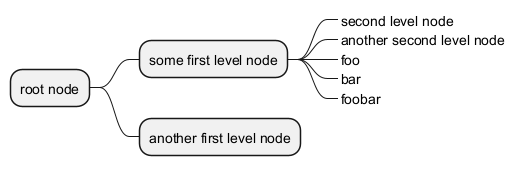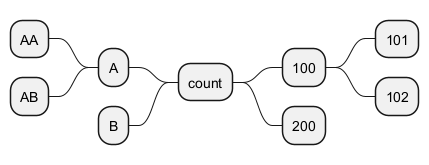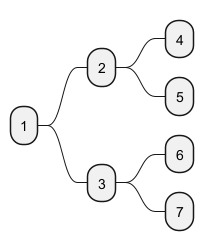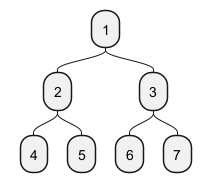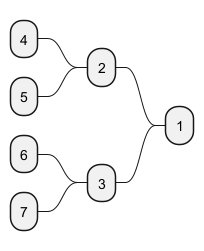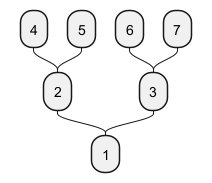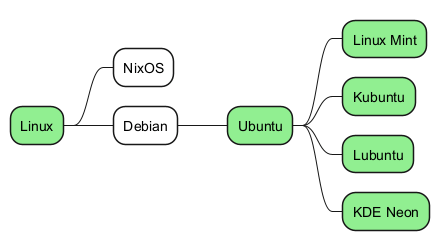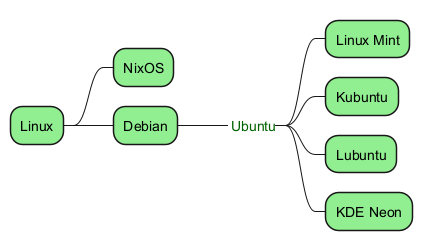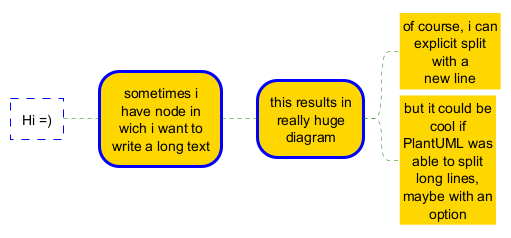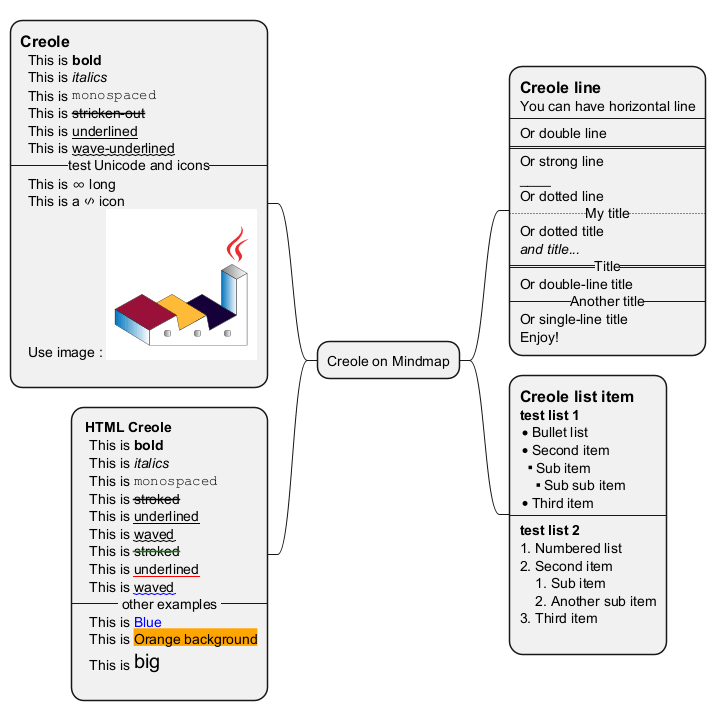Un
diagrama MindMap, en el contexto de
PlantUML, es una herramienta eficaz para
el brainstorming, la organización de ideas y la planificación de proyectos. Los diagramas MindMap, o mapas mentales, son
representaciones visuales de la información, donde las ideas centrales se ramifican en temas relacionados, creando una telaraña de conceptos. PlantUML facilita la creación de estos diagramas con su
sintaxis simple,
basada en texto, permitiendo la organización y visualización eficiente de ideas complejas.
El uso de PlantUML para MindMaps es particularmente ventajoso debido a su
integración con otras herramientas y sistemas. Esta integración agiliza el proceso de incorporación de mapas mentales en la documentación de proyectos más amplios. El enfoque basado en texto de PlantUML también permite una fácil modificación y
control de versiones de los mapas mentales, por lo que es una herramienta dinámica para la lluvia de ideas en colaboración y el desarrollo de ideas.
Los mapas mentales en PlantUML se pueden utilizar para diversos fines, desde delinear la estructura de un proyecto a la lluvia de ideas sobre las características del producto o estrategias de negocio. El
diseño jerárquico e intuitivo de los mapas mentales ayuda a identificar las relaciones entre las diferentes ideas y conceptos, por lo que es más fácil ver el panorama general y señalar las áreas que requieren una mayor exploración. Esto convierte a PlantUML en una herramienta inestimable para gestores de proyectos, desarrolladores y analistas empresariales que necesitan un método para organizar visualmente y presentar información compleja de forma clara y concisa.
Esta sintaxis es compatible con OrgMode
|
🎉 Copied!


|
@startmindmap
* Debian
** Ubuntu
*** Linux Mint
*** Kubuntu
*** Lubuntu
*** KDE Neon
** LMDE
** SolydXK
** SteamOS
** Raspbian with a very long name
*** <s>Raspmbc</s> => OSMC
*** <s>Raspyfi</s> => Volumio
@endmindmap
|
WARNING
This translation need to be updated. WARNING
Esta sintaxis es compatible con Markdown
|
🎉 Copied!


|
@startmindmap
* root node
* some first level node
* second level node
* another second level node
* another first level node
@endmindmap
|
WARNING
This translation need to be updated. WARNING
Puede utilizar la siguiente notación para elegir el lado del diagrama
|
🎉 Copied!


|
@startmindmap
+ OS
++ Ubuntu
+++ Linux Mint
+++ Kubuntu
+++ Lubuntu
+++ KDE Neon
++ LMDE
++ SolydXK
++ SteamOS
++ Raspbian
-- Windows 95
-- Windows 98
-- Windows NT
--- Windows 8
--- Windows 10
@endmindmap
|
You can use
: and
; to have multilines box.
|
🎉 Copied!


|
@startmindmap
* Class Templates
**:Example 1
<code>
template <typename T>
class cname{
void f1()<U+003B>
...
}
</code>
;
**:Example 2
<code>
other template <typename T>
class cname{
...
</code>
;
@endmindmap
|
|
🎉 Copied!


|
@startmindmap
+ root
**:right_1.1
right_1.2;
++ right_2
left side
-- left_1
-- left_2
**:left_3.1
left_3.2;
@endmindmap
|
You can create multiroot mindmap, as:
|
🎉 Copied!


|
@startmindmap
* Root 1
** Foo
** Bar
* Root 2
** Lorem
** Ipsum
@endmindmap
|
[Ref. QH-773]
It is possible to change node
color.
With inline color
|
🎉 Copied!


|
@startmindmap
*[#Orange] Colors
**[#lightgreen] Green
**[#FFBBCC] Rose
**[#lightblue] Blue
@endmindmap
|
- Arithmetic notation syntax mindmap
|
🎉 Copied!


|
@startmindmap
+[#Orange] Colors
++[#lightgreen] Green
++[#FFBBCC] Rose
--[#lightblue] Blue
@endmindmap
|
|
🎉 Copied!


|
@startmindmap
*[#Orange] root node
*[#lightgreen] some first level node
*[#FFBBCC] second level node
*[#lightblue] another second level node
*[#lightgreen] another first level node
@endmindmap
|
With style color
|
🎉 Copied!


|
@startmindmap
<style>
mindmapDiagram {
.green {
BackgroundColor lightgreen
}
.rose {
BackgroundColor #FFBBCC
}
.your_style_name {
BackgroundColor lightblue
}
}
</style>
* Colors
** Green <<green>>
** Rose <<rose>>
** Blue <<your_style_name>>
@endmindmap
|
- Arithmetic notation syntax mindmap
|
🎉 Copied!


|
@startmindmap
<style>
mindmapDiagram {
.green {
BackgroundColor lightgreen
}
.rose {
BackgroundColor #FFBBCC
}
.your_style_name {
BackgroundColor lightblue
}
}
</style>
+ Colors
++ Green <<green>>
++ Rose <<rose>>
-- Blue <<your_style_name>>
@endmindmap
|
|
🎉 Copied!


|
@startmindmap
<style>
mindmapDiagram {
.green {
BackgroundColor lightgreen
}
.rose {
BackgroundColor #FFBBCC
}
.your_style_name {
BackgroundColor lightblue
}
}
</style>
* root node
* some first level node <<green>>
* second level node <<rose>>
* another second level node <<your_style_name>>
* another first level node <<green>>
@endmindmap
|
|
🎉 Copied!


|
@startmindmap
<style>
mindmapDiagram {
.myStyle * {
BackgroundColor lightgreen
}
}
</style>
+ root
++ b1 <<myStyle>>
+++ b11
+++ b12
++ b2
@endmindmap
|
[Ref. GA-920]
You can remove the box drawing using an underscore.
|
🎉 Copied!


|
@startmindmap
* root node
** some first level node
***_ second level node
***_ another second level node
***_ foo
***_ bar
***_ foobar
** another first level node
@endmindmap
|
|
🎉 Copied!


|
@startmindmap
*_ root node
**_ some first level node
***_ second level node
***_ another second level node
***_ foo
***_ bar
***_ foobar
**_ another first level node
@endmindmap
|
|
🎉 Copied!


|
@startmindmap
+ root node
++ some first level node
+++_ second level node
+++_ another second level node
+++_ foo
+++_ bar
+++_ foobar
++_ another first level node
-- some first right level node
--_ another first right level node
@endmindmap
|
It is possible to use both sides of the diagram.
|
🎉 Copied!


|
@startmindmap
* count
** 100
*** 101
*** 102
** 200
left side
** A
*** AA
*** AB
** B
@endmindmap
|
You can change (whole) diagram orientation with:
left to right direction (by default)top to bottom directionright to left directionbottom to top direction (not yet implemented/issue then use workaround)
Left to right direction (by default)
|
🎉 Copied!


|
@startmindmap
* 1
** 2
*** 4
*** 5
** 3
*** 6
*** 7
@endmindmap
|
Top to bottom direction
|
🎉 Copied!


|
@startmindmap
top to bottom direction
* 1
** 2
*** 4
*** 5
** 3
*** 6
*** 7
@endmindmap
|
Right to left direction
|
🎉 Copied!


|
@startmindmap
right to left direction
* 1
** 2
*** 4
*** 5
** 3
*** 6
*** 7
@endmindmap
|
Bottom to top direction
|
🎉 Copied!


|
@startmindmap
top to bottom direction
left side
* 1
** 2
*** 4
*** 5
** 3
*** 6
*** 7
@endmindmap
|
[Ref. QH-1413]
|
🎉 Copied!


|
@startmindmap
caption figure 1
title My super title
* <&flag>Debian
** <&globe>Ubuntu
*** Linux Mint
*** Kubuntu
*** Lubuntu
*** KDE Neon
** <&graph>LMDE
** <&pulse>SolydXK
** <&people>SteamOS
** <&star>Raspbian with a very long name
*** <s>Raspmbc</s> => OSMC
*** <s>Raspyfi</s> => Volumio
header
My super header
endheader
center footer My super footer
legend right
Short
legend
endlegend
@endmindmap
|
node, depth
|
🎉 Copied!


|
@startmindmap
<style>
mindmapDiagram {
node {
BackgroundColor lightGreen
}
:depth(1) {
BackGroundColor white
}
}
</style>
* Linux
** NixOS
** Debian
*** Ubuntu
**** Linux Mint
**** Kubuntu
**** Lubuntu
**** KDE Neon
@endmindmap
|
boxless
|
🎉 Copied!


|
@startmindmap
<style>
mindmapDiagram {
node {
BackgroundColor lightGreen
}
boxless {
FontColor darkgreen
}
}
</style>
* Linux
** NixOS
** Debian
***_ Ubuntu
**** Linux Mint
**** Kubuntu
**** Lubuntu
**** KDE Neon
@endmindmap
|
Usando
MaximumWidth se puede controlar el ajuste automático de las palabras. La unidad utilizada es el píxel.
|
🎉 Copied!


|
@startmindmap
<style>
node {
Padding 12
Margin 3
HorizontalAlignment center
LineColor blue
LineThickness 3.0
BackgroundColor gold
RoundCorner 40
MaximumWidth 100
}
rootNode {
LineStyle 8.0;3.0
LineColor red
BackgroundColor white
LineThickness 1.0
RoundCorner 0
Shadowing 0.0
}
leafNode {
LineColor gold
RoundCorner 0
Padding 3
}
arrow {
LineStyle 4
LineThickness 0.5
LineColor green
}
</style>
* Hi =)
** sometimes i have node in wich i want to write a long text
*** this results in really huge diagram
**** of course, i can explicit split with a\nnew line
**** but it could be cool if PlantUML was able to split long lines, maybe with an option
@endmindmap
|
You can use
Creole or HTML Creole on Mindmap:
[Ref. QA-17838]
